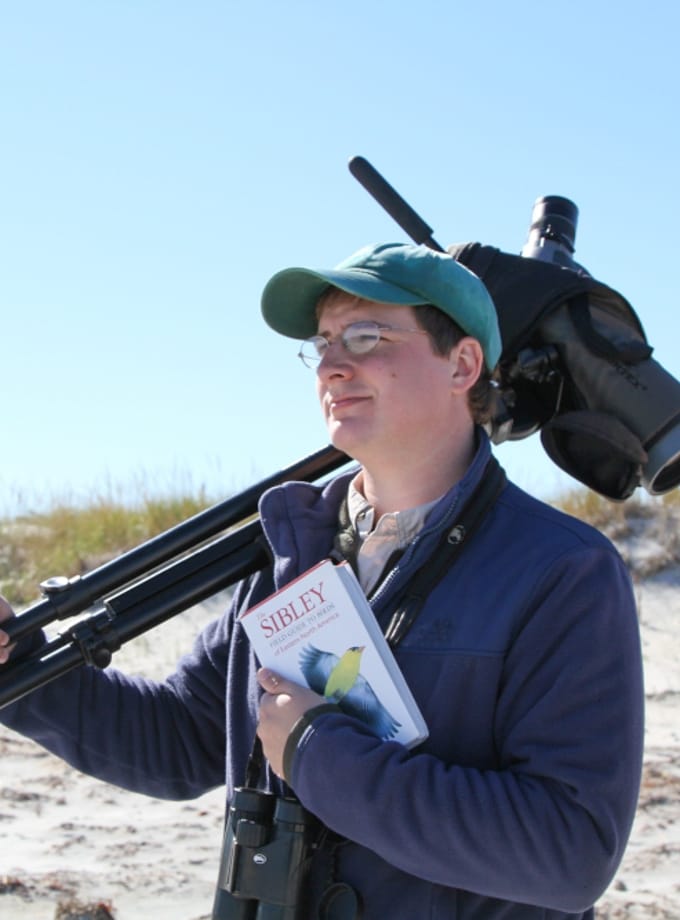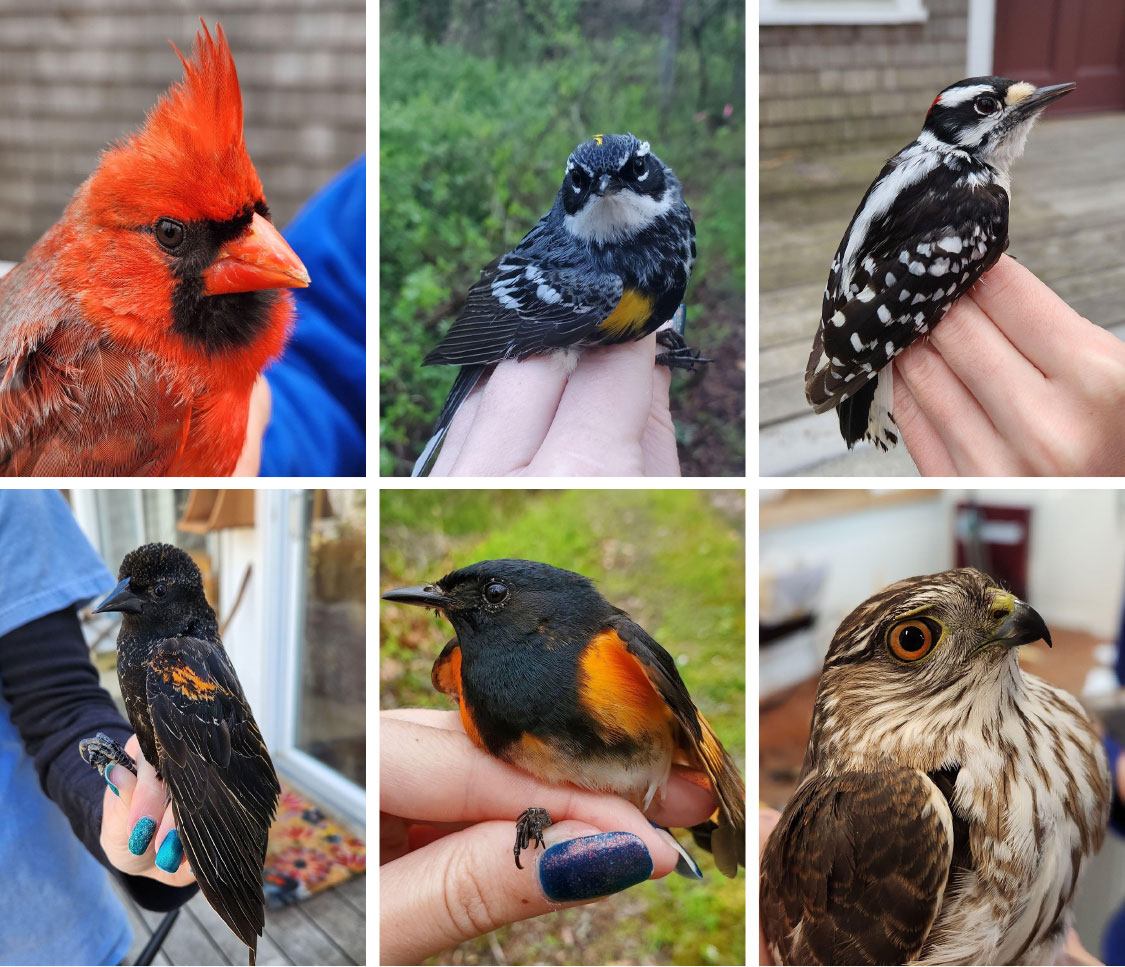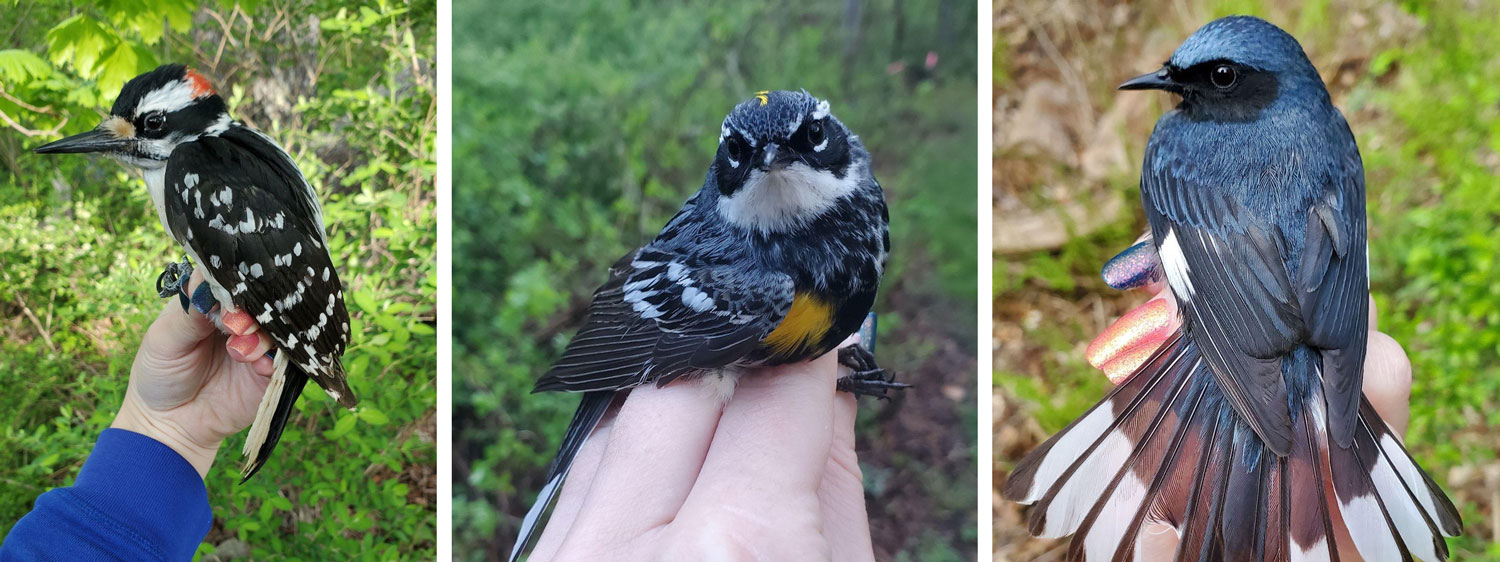
Evan Dalton
DIRECTOR, MANOMET OBSERVATORY
Database Progress
Another banding season is in the books! This was our 58th year of banding and the 55th official fall of consistent migration monitoring at Manomet Observatory. This season we welcomed a record number of visitors to the banding lab while continuing our efforts monitoring the resident and migratory species that rely upon the property throughout the fall migratory season.
We completed troubleshooting our new data entry system this fall. And when we fully implement the system in spring 2024, that will mean better initial data quality, less manual work in managing the database, and (most importantly) more learning within the banding lab.
Warm Weather Turns Windy
Weather this fall was initially quite warm and welcoming. Early season numbers of birds peaked around mid-September, but soon thereafter the winds shifted to the North. Normally that would be good news, as the tailwinds help blow migrating birds south and ensure decent turnover of new birds captured in the mist nets between days. Unfortunately, when the winds are too strong, our nets move significantly, lowering capture rates and increasing the odds of bird injury. Thus, we close our nets in the face of significant winds.
Wind data are hard to track down, but from what I can find, the data bear out that this was one of the windiest Octobers in recent memory. On the upside, all of this down time allowed for getting to know our way around the new computer system, studies in molt limits, quality time with the new version of the Pyle Guide, and musing over an unusual Blackpoll Warbler with an additional tail feather.

Birds by the Numbers
Due to all the high winds, busy banding days in the lab were few and far between. We processed 85 birds on September 11 and the lab saw 60+ birds only five times this season (in comparison to 12 days over 60 birds in the fall of 2022 and 18 days in fall of 2021). Overall, we captured 1,668 birds and placed bands on 1,143 new birds of 62 species.
As one would expect, given the low sampling effort in the latter part of the season, we saw near record low numbers of many species, including many of the local breeders and resident species we would typically catch in the tail end of the season. This includes below average numbers of Black-capped Chickadee, Tufted Titmouse, Northern Cardinal, Brown Creeper, and (gulp) Gray Catbird.
Abnormally high numbers of Northern Waterthrush, Yellow-bellied Flycatcher, Blue-winged Warbler, Eastern Phoebe, and Hooded Warbler occurred in the first half of the season and were probably driven by warmer temperatures and southerly winds “bottling up” southbound birds in our region.
Captures of Note
Interesting captures from the season included a seven-year-old Blue Jay and a five-year-old Gray Catbird that has migrated south to overwinter near central America at least four times! The aforementioned Blackpoll Warbler with an additional tail feather was unusual to say the least, and we’ll be writing the observation up as a note for publication this winter.
We had more than 550 visitors to our banding lab for hands-on educational and experiential programming – all designed to help encourage a new generation of enthusiastic naturalists with a connection to the environment. Visitors included school groups (from kindergarten-aged to college-aged), as well as many enthusiastic local bird clubs.
Banding Team, Donors & Supporters: Kudos
Our banding team included interns Clara Darr and Trenton Voytko and was led by Sarah Duff and Amy Hogan. We would like to thank the countless donors and supporters of our work over the years, and we look forward to a fruitful winter and to the eventual return of northbound songbirds.





 Back to all
Back to all